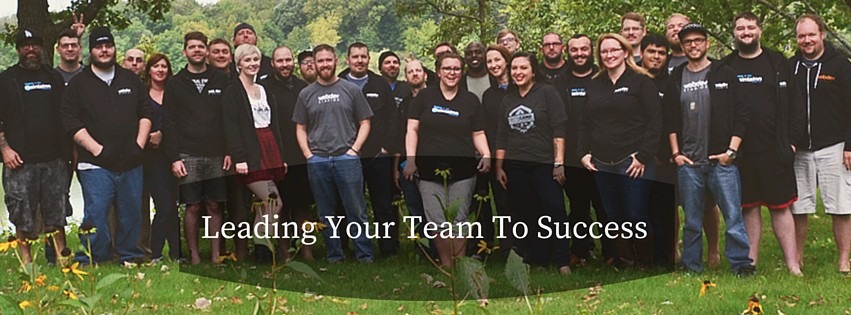A leader is someone who demonstrates what’s possible.
-Mark Yarnell
Can you describe a great leader in your life? You may be thinking of someone who is a super intelligent, strategic, captivating genius. That’s what makes a good leader, right? Not…well, not always. Demonstrating leadership can be achieved through just a few key elements: clear guidance, communication, accountability and most importantly, trust.
Any and every company, team, and project, benefits from a strong leader. Leadership guides the project from initiation to completion, and acts as the glue that keeps the team unified. So what core leadership skills lead to success?
A good leader provides clear direction. A great leader works with an individual, or team, to thoroughly review documented company, team, or project, expectations that outline overall requirements and end goals. A team member cannot be expected to provide a certain level of work without defined expectations. As a leader, knowing your clarity can help a project succeed or fail should encourage you to be clear in overall requirements, goals, and expectations. After all, people cannot deliver if they don’t know what they’re striving for, nor can they meet deadlines if they’re unclear as to what the overall plan is and what the markers are in the first place. Your team needs to know what they are striving for, and as a leader, it is your job to outline that for them.
A company, team or project strives on communication, but it is crucial for a leader to guide your team through that communication. I’ve said it before and I’ll say it again: who, what, when, where and why! Your team needs to understand a few key requirements for a project:
1. Who is working on this project?
2. What are the scope of work requirements?
3. When is our deliverable date?
4. Where should I update the client?
5. Why did I eat that extra slice of pizza…?
Just kidding! You get the idea: make sure you communicate all necessary information to keep the project running smoothly!
Keep the project on track by monitoring progress. As the leader, you should strive to understand where a project or task is at ALL times. If you don’t know where something is: ask, ask, ask. I’m all for avoiding interruption of a development while someone is heads down coding, but if the client is asking and you cannot answer, don’t be afraid to bug your team to find the answer. It’s your job as the leader to track down crucial information, and shining on the client or avoiding them won’t help. Knowing when it’s crucial to interrupt is an extremely important part of being a leader–along with the fearlessness needed to be persistent and, let’s face it, a little obnoxious sometimes to track down what you need.
It’s also great practice to post consistent updates for your client, whether it be daily, weekly or monthly; chances are they are wanting to know the progress along the way.
Leadership is something can be reflected in small things, like the language we use. I always try to use ‘we’ instead of ‘I,’ even in status emails; we’re a team regardless of who is doing what to make the project successful, and I want my language to be unifying.
Make decisions for your team… and take responsibility if it isn’t the right choice. Sometimes a leader has to make the the tough decisions, provide the bad news, or just plain admit to a mistake on behalf of the team. Leading your team or company by making those tough calls, whether it be successful or not, is still stepping up to that leadership responsibility. We all make mistakes, missteps, and miscalculations at times; developing trust with your team means taking ownership of the decisions you made and approved and acting as a buffer between your client and the team members. You are the face of your team, which means it’s your job to navigate troubled waters. Doing so with grace will establish trust with your client, and, even more importantly, keep your team on your side because they will know you’ve got their back.
The only safe ship in a storm is leadership.
-Faye Wattleton
Build trust! A great leader is one who trusts their team to do the job without micro-managing them, and in turn, can be trusted by their team members to follow through on the say things they will do, advocate for their team, and keep their team on track.
